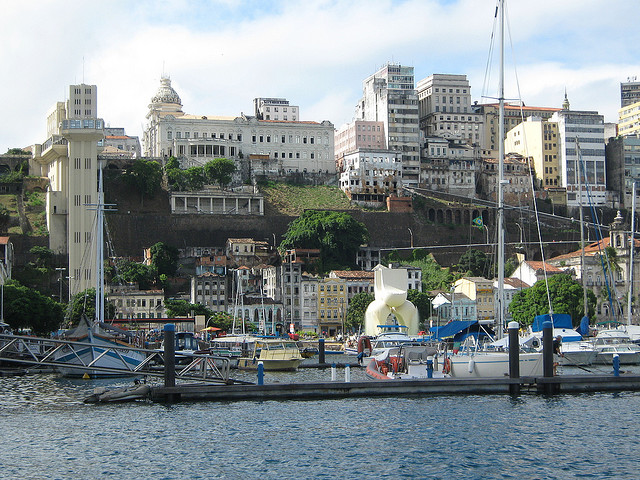
Bahia, Brazil (Jorge Andrade)
By N.M. Gallardo
Bronx Staff Writer
BAHIA, BRAZIL – You begin to see the African connection inside the Museum of African Heritage where African slave routes are depicted on one wall. Soon, you realize that everywhere you look in this northeast Brazilian state — from the museums to the cuisine — African heritage is prevalent.
In fact, 85 percent of Bahia’s population is of African decent, making it the largest African-descended population outside the African continent.
The purpose of our April 2009 trip, sponsored by Art Helping Life, a non-profit organization that helps homeless Brazilian children, was to introduce us to Bahian culture. In addition to the Museum of African Heritage, we visited the Nossa Senhora Rosario Dos Pretos Church; the Ginga Mundo capoeira martial arts school; a Bale Folclorico dance company performance and a workshop about Brazilian musical instruments.
The church, museum, and dance performance were located in the section of the city of Salvador called Pelourinho, which has been designated by UNESCO (the cultural and scientific education arm of the United Nations) as a world heritage site.
“I have traveled throughout the world. I believe that Bahia is very special and culturally rich due to the warmth of its people and their awareness of their African heritage,” said attorney Sherri Donovan, who sits on the board of directors of Art Helping Life.
During the tour we were served typical Bahian dishes. The mangoes, pineapples, papaya, guava, and cashews were local. We also ate such African-inspired dishes as caruru and camarao na moranga. Caruru is a stew made of okra, fish, shrimp, chicken, and cashews, seasoned with palm oil, onions and peppers. Camarao na moranga is winter squash combined with shrimp and cream cheese. There was yucca (manioc) made into a thick paste and wrapped in banana leafs. Brazilian Indigenous peoples were the first to cultivate yucca.
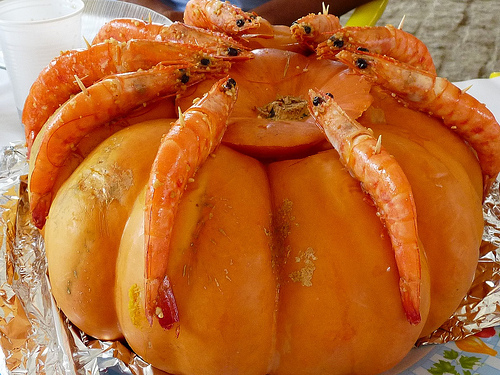
Camarao Na Moranga (Bruno Covas)
“Bahia is one of the most beautiful and extraordinary places on earth, geographically, and spiritually,” said Velly de Bahia, a dancer and a founder of the Bale Folclorico da Bahia.
We learned of the Bahians’ extraordinary spiritual connection to Africa when we visited the Rosario Dos Pretos, a church with blue and white facade and two towers. It dominates the Pelourinho Square, which is filled with pale pink, green and yellow colonial buildings with tile roofs.
Construction on Rosario Dos Pretos started in 1704. It took 100 years to complete by a Pelourinho organization called Brotherhood of Black Men without any outside financial help. Inside, there are sculptures of Black saints, and every Tuesday there is a Mass in Portuguese, except that the songs are sung in the Nigerian Yoruba language. The service is accompanied by music from drums, the agogo (small cow bells embedded into a wooden square), and the shekere. The shekere is a Nigerian percussion instrument consisting of a gourd with beads woven into a net covering.
In the back of the church, there is a cement outdoor patio beneath which unnamed slaves are buried. There were shrines filled with dozens of lighted candles. Two people were on their hands and knees in prayer near a shrine covered by wooden bars. Inside the shrine there was a women’s face made of wood with piercing light eyes, a collar around her neck and a mask held by leather straps covering her mouth.
“According to legend she could have been a wealthy woman, but choose to speak about the plight of other slaves. She was silenced and imprisoned where she died,” said Velly.
The slaves imported from Africa were forced to practice Catholicism. The African spirits – called Orishas in their Candomble religion — were given Christian names. Ogun became St. Anthony, for example, so the old religion continued to be practiced. A photo of the world-renowned Portuguese writer, Jorge Amado, who wrote “Clove and Cinnamon,” is on display in a small museum near the church, alongside a Candomble priestess. Santeria/Lucumi, and Vodou are varieties of Candomble that are practiced throughout the Caribbean and elsewhere.
Upon entering the Museum of African Heritage one sees African artifacts on display, including “troncos”- benches fashioned from fine smooth wood with triangles and circles carved into their bases by the Ashanti of Ghana. Also on exhibit were popular games, and instruments.
“The trocano, a tree trunk drum with two curved holes on top and struck with two sticks to send messages, was used by both the African and indigenous (Amerindian) peoples,” said anthropologist and musicologist Emilia Biancardi, composer and founder of the folk-cultural group “Viva Bahia.”
In the museum there were two rooms filled with breathtaking, intricately engraved floor-to-ceiling wooden plaques. Each was of a different Orisha from the ancient societies of West, Central and Southwest Africa including the Dahomey, Yoruba, the Kongo, and the Angola kingdoms.
There were Amerindian and Catholic elements in Candomble due to cultural exchanges, which resulted in a syncretism, or fusion. The Orisha that reflects God, known as Olodumare, fell from the sky, bringing his belief system. In Candomble, there is the belief that daily life depends on a proper alignment and knowledge of one’s “ori”, the inner portion of the soul, which determines destiny and success. One strives for good character, inner peace, and satisfaction with life. As in Amerindian traditions, Candomble also deals with diseases, and for healing to occur, it is believed that physical, psychological, spiritual, environmental and social forces must be addressed.
Each Orisha possesses certain colors and specific characteristics, and represents the natural forces in the world, such as water, and metal. Ogun is the deity of iron, war, labor, politics, and technology. The museum’s wooden plaque of him had an engraved dog at the bottom and Ogun’s body was filled with chains, horns, locks, and he carried a sword. Xango, known as Chango in Caribbean countries, was represented with a turtle below his thin legs under a skirt of thick folds. He had a wooden crown, and a necklace with embedded stones.
Homage to the Orishias was seen in the Bale Folchoarico da Bahia dance concert. In one piece, many Orishas: Ogun, Oxum (Goddess of rivers and lakes), Omolu (God of diseases) were portrayed by dancers. One costume was in gold and tan material with a mask made of dangling golden beads and the dancer wore a gold colored turban. In the fire dance, a man carried two plates whose surface was on fire. The dancer spread fire over his arms and put it into his mouth. This symbolized the Orisha, Xango warrior of fire, thunder, and male power.
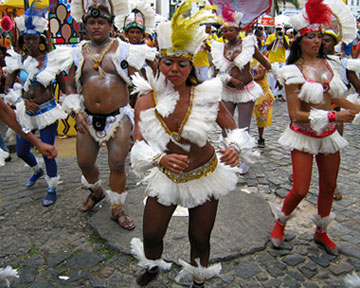
Bahian Dancing (Photo courtesy of Carnaval.com)
The power of males was depicted in the sugar cane workers dance with canes and machetes so violently hit that sparks flew from the latter. The showstopper was the Capoeira, African martial arts, brought during the 16th century, which had elements of games, and dance. Men performed breath-taking acrobatics, kicks and martial art movements, while the music was played with instruments called a Berimbaus, which look like an archer’s bow, using a steel string and a gourd for resonance (struck by a stick), tambourines (pandeires), a reco-reco (rasps), agogo bells, and a atabaque drum. As the music played the men did the ginga (rocking back and forth and swinging movements) of their feet.
Members of the Quilombos, Brazilian fugitive 16th century and later escaped slave settlements, were experts in Capoeira for defense. Zumbi dos Palmares, whose statue is located in a Pelourinnho park, was a famous leader of one of these settlements. He fought against the Portuguese slave owners. He was caught, after many battles, and beheaded.
When the Portuguese arrived in Bahia (the first capitol) in the early 1500’s they found the Tupi, Guarani and other native tribes. Some of the tribes were peaceful; one was a cannibal who ate a few Portuguese to gain the power of their spirits. Following the Portuguese arrival, the numbers of Indigenous peoples declined due to exposure to new diseases, and others assimilated into the Portuguese population. In 1997, 200 tribes remained (from four million to 300,000): about 1% of the Brazilian population.
“Natives are protected in restricted areas by the government, but the rest still fight for recognition,’ said Velly.
The Portuguese introduced sugar plants in 1550, and African slaves were brought to work the plantations. They came from Nigeria, Angola, and other areas, bringing their religion and culture.
“Of the 12 million slaves brought over, two million died along the way. In 1888, slavery was abolished and the need for plantation workers brought in people from the Middle East, Japan, Italy, and other European countries.” said Leonardo de Bahia, our tour guide.
For me, this trip dissolved some stereotypes and lack of information about the culture, heroes, and philosophies of the Afro-Brazilian people. The African and Indigenous peoples in Brazil and elsewhere have a lot to teach the rest of the world.



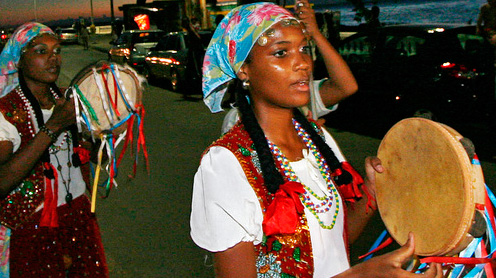
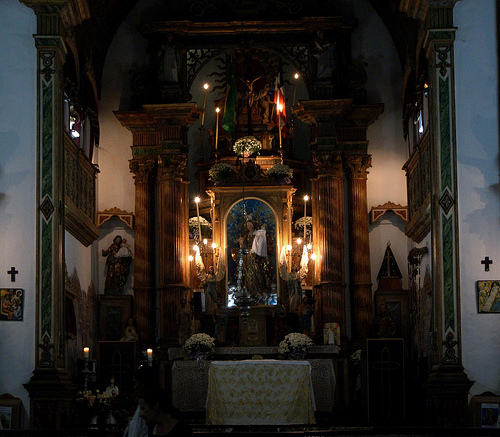
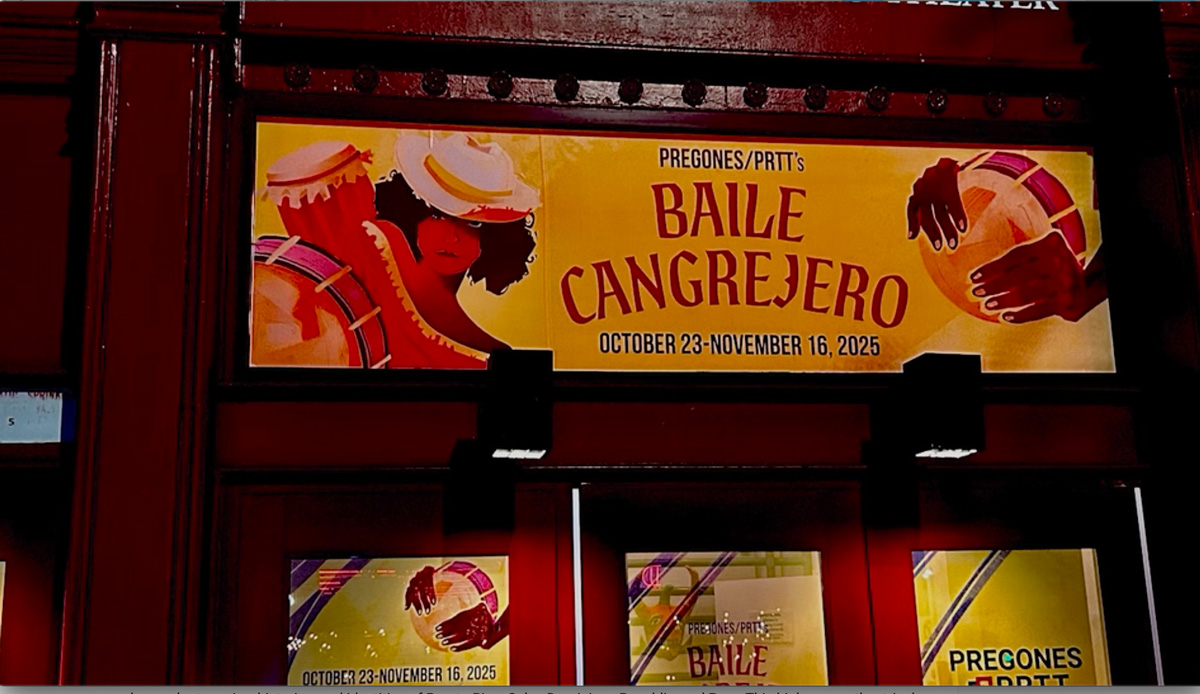
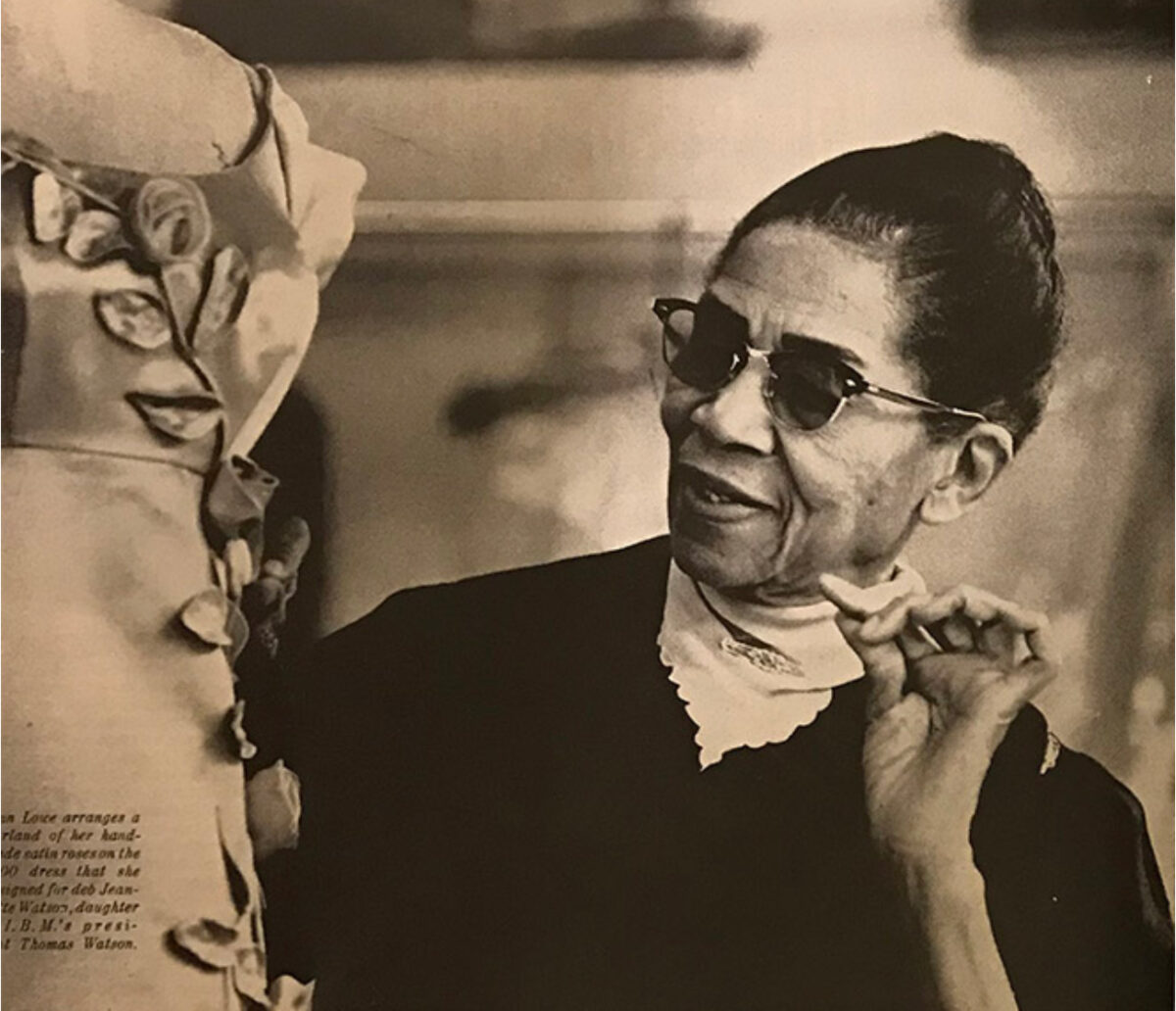
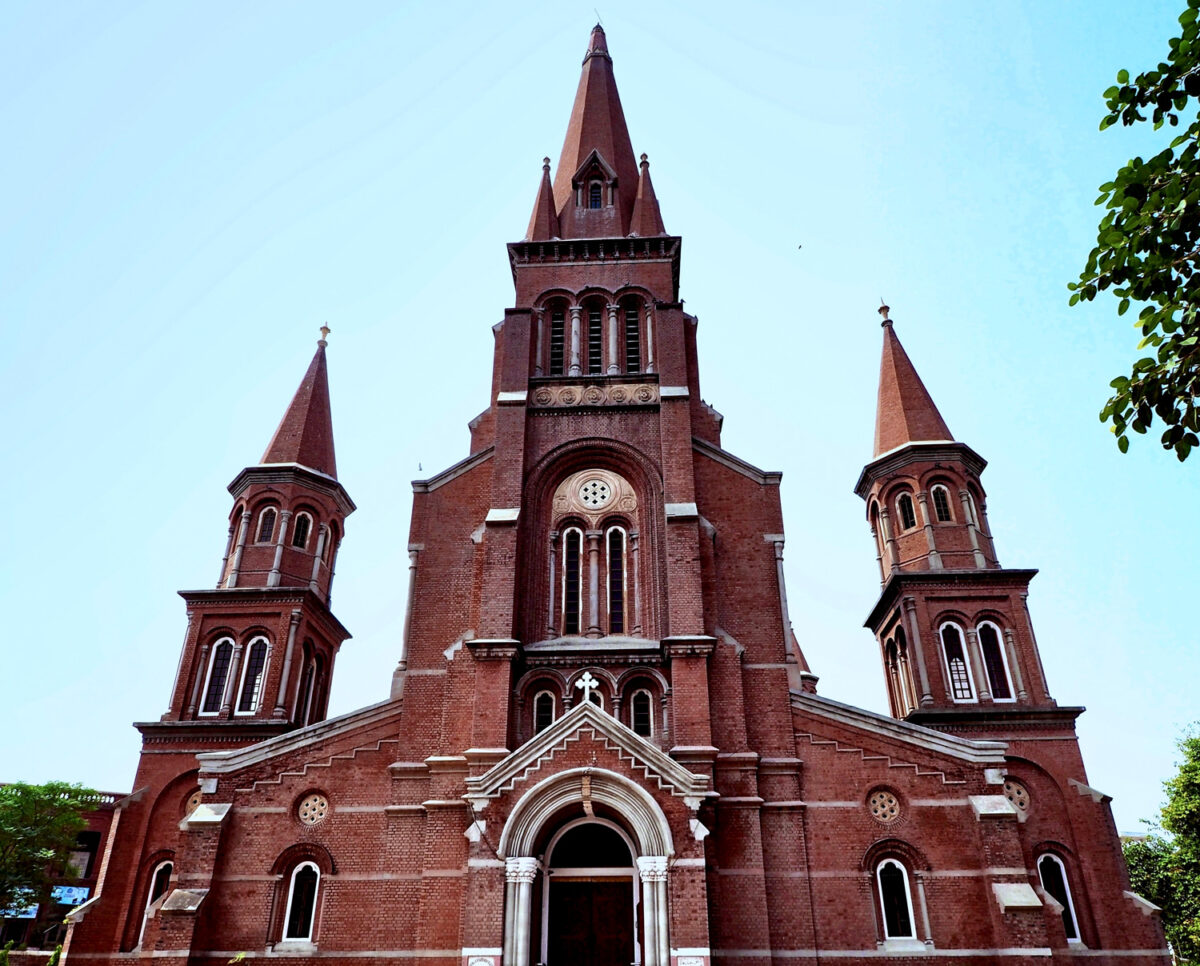
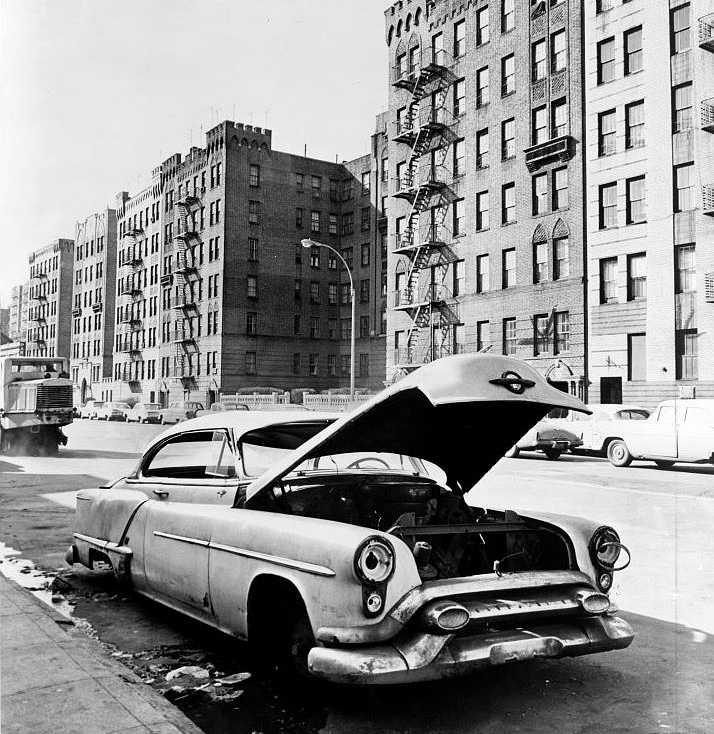
J. Njeri Wills | June 23, 2013
|
Much appreciated. I would love to visit Bahia.
As a former bookseller, I am very interested in
attending a Literature Festival.
Maria do Couto | November 22, 2013
|
I was born and raised in Bahia. I go back often. This is one of the most respectful writing about my culture. Thank you!